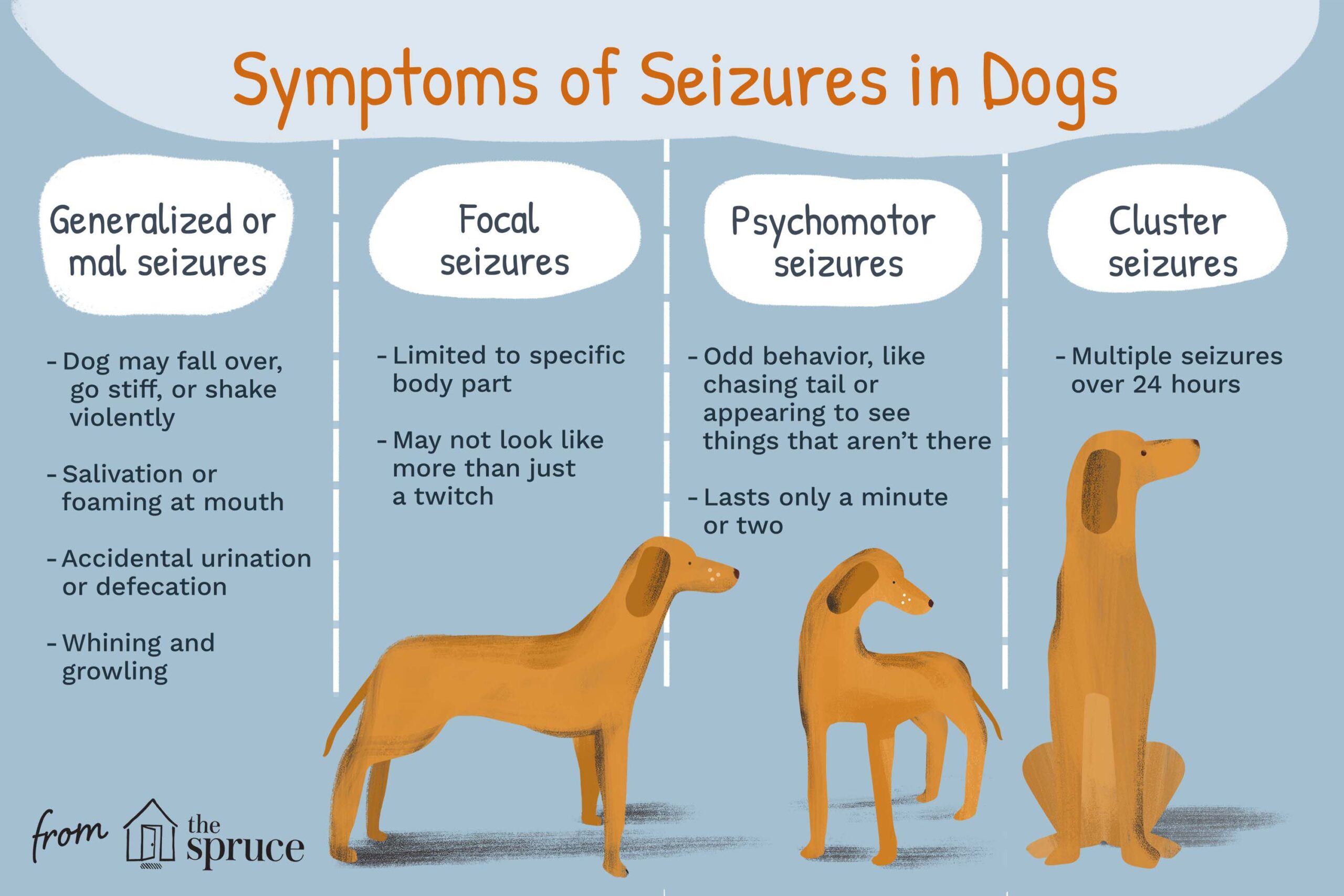Key Takeaways:
- Service dogs are trained to assist individuals with disabilities in various ways, such as guiding the visually impaired or alerting those with hearing impairments.
- Guide dogs are specifically trained to help people who are blind or visually impaired navigate their surroundings safely.
- Hearing dogs are trained to alert individuals who are deaf or hard of hearing to important sounds, such as doorbells and fire alarms.
- Medical alert dogs can detect changes in a person's body odor or behavior and alert them to an impending medical issue, such as a seizure or diabetic episode.
- Other types of service dogs include mobility assistance dogs, psychiatric service dogs, autism support dogs, and allergen detection dogs.
Are you curious about the incredible world of service dogs? Imagine having a furry companion by your side, not just for companionship, but to assist you with daily tasks and provide support in times of need. Service dogs are specially trained to help people with disabilities, and their skills are truly remarkable. Whether it's guiding the visually impaired or providing emotional support to those with anxiety or PTSD, these amazing canines have a wide range of abilities. In fact, there are eight different types of service dogs, each with their own unique set of skills and responsibilities. By delving into this subject, you'll gain a deeper understanding of how these remarkable animals enhance the lives of individuals in need. So let's embark on this journey together and explore the incredible world of service dogs!
What are service dogs and how do they help people?
Service dogs are specially trained dogs that provide assistance and support to individuals with disabilities. These incredible animals undergo extensive training to perform a variety of tasks that help their owners navigate the challenges of daily life. They are not just pets; they are working animals that make a significant difference in the lives of their owners.
Service dogs can assist people with physical disabilities, medical conditions, psychiatric disorders, and sensory impairments. They can be trained to perform tasks such as opening doors, picking up dropped items, pulling wheelchairs, alerting their owners to sounds or alarms, providing stability for those with balance issues, and even detecting changes in blood sugar levels for individuals with diabetes. These highly trained dogs offer both practical assistance and emotional support to enhance the independence and quality of life for their owners.
Benefits of Service Dogs
- Increased independence: Service dogs enable individuals with disabilities to carry out daily tasks independently.
- Emotional support: These loyal companions provide comfort and emotional support during challenging times.
- Safety and security: Service dogs can alert their owners to potential dangers or health emergencies.
- Social interaction: Having a service dog often encourages positive social interactions and reduces feelings of isolation.
A Day in the Life of a Service Dog
A typical day for a service dog involves various activities depending on the needs of its owner. In the morning, the dog may assist with waking up its owner by nudging them or retrieving necessary items like medication. Throughout the day, it may accompany its owner on outings, helping them navigate crowded spaces or providing stability while walking. The dog is always attentive to its owner's needs and ready to perform specific tasks when required.
Service dogs undergo regular training sessions to maintain and improve their skills. They also require proper care, including exercise, grooming, and a balanced diet. It's essential for service dog owners to provide them with a loving and supportive environment while respecting their working role.
Can you name one type of service dog and explain what it does for its owner?
Guide Dogs
One type of service dog is a guide dog. Guide dogs are specially trained to assist individuals who are blind or visually impaired. These incredible dogs serve as their owners' eyes, helping them navigate through their daily lives with confidence and independence.
Guide dogs undergo extensive training to learn how to safely guide their owners around obstacles, such as traffic, stairs, and crowded areas. They are taught to stop at curbs, avoid obstacles on the ground, and find specific locations or landmarks. With their keen senses and intelligence, guide dogs provide invaluable support to their visually impaired owners.
How many types of service dogs are there, and can you list three of them?
Types of Service Dogs
There are several types of service dogs that perform different tasks based on the needs of their owners. Here are three examples:
- Medical Alert Dogs: These dogs are trained to detect changes in their owner's body odor or behavior that may indicate an impending medical emergency, such as a seizure or drop in blood sugar levels.
- Hearing Dogs: Hearing dogs assist individuals who are deaf or hard of hearing by alerting them to important sounds like doorbells, alarms, or someone calling their name. They help bridge the communication gap for these individuals.
- Psychiatric Service Dogs: These dogs provide support to individuals with mental health disorders such as anxiety or post-traumatic stress disorder (PTSD). They can offer comfort during panic attacks, interrupt harmful behaviors, and provide emotional grounding.
Why do some people need a guide dog, and what tasks can they assist with?
Assistance for the Visually Impaired
Some people require the assistance of a guide dog because they are blind or visually impaired. These dogs play a crucial role in helping their owners navigate the world around them. They are trained to perform various tasks, including:
- Navigating through busy streets and crowded areas.
- Avoiding obstacles such as curbs, stairs, and low-hanging branches.
- Locating specific destinations or landmarks.
- Stopping at curbs to ensure safe crossings.
Guide dogs provide their owners with a sense of independence and freedom by enabling them to move around confidently without relying on others for assistance.
What is the role of a hearing dog, and how do they support individuals who are deaf or hard of hearing?
Serving the Deaf or Hard of Hearing
Hearing dogs play an essential role in supporting individuals who are deaf or hard of hearing. Their primary role is to alert their owners to important sounds that they may not be able to hear on their own. Some ways in which hearing dogs support their owners include:
- Alerting them to doorbells, phone calls, or alarm sounds.
- Notifying them when someone is calling their name.
- Indicating potential dangers, such as sirens or smoke alarms.
Hearing dogs act as reliable companions who help bridge the communication gap for individuals with hearing impairments, allowing them to live more independently and safely.
Could you describe the responsibilities of a medical alert dog and how they aid people with medical conditions?
Supporting Individuals with Medical Conditions
Medical alert dogs are trained to assist individuals with various medical conditions by detecting changes in their owner's body odor or behavior. These dogs have specific responsibilities that include:
- Alerting their owners to an oncoming seizure, allowing them to find a safe place or take necessary precautions.
- Notifying their owners of significant drops or spikes in blood sugar levels for individuals with diabetes.
- Recognizing signs of an impending panic attack or anxiety episode and providing comfort and support.
By detecting these changes early, medical alert dogs can help their owners seek appropriate medical attention or take preventive measures, ultimately improving their overall well-being and safety.
Can you explain the job of a psychiatric service dog and how they provide support to individuals with mental health disorders?
Serving Individuals with Mental Health Disorders
Psychiatric service dogs play a vital role in supporting individuals with mental health disorders. Their job is to provide emotional support, comfort, and assistance during challenging situations. Some ways in which psychiatric service dogs provide support include:
- Detecting signs of anxiety or panic attacks and offering calming pressure through deep pressure therapy.
- Interrupting harmful behaviors such as self-harm or repetitive actions associated with certain mental health conditions.
- Aiding in grounding techniques by providing tactile stimulation through tasks like pawing or nudging their owner's hand.
Psychiatric service dogs offer unconditional love, companionship, and a sense of security to individuals struggling with mental health disorders, helping them manage their symptoms and improve their quality of life.
In conclusion, service dogs play important roles in assisting people with various disabilities. From guide dogs for the blind to hearing dogs for the deaf, these amazing animals provide support and companionship, helping their owners lead more independent lives.
How can you tell a real service dog from a fake?
Typically, it is simple to identify a genuine service dog based on their concentrated, disciplined, and unresponsive behavior. Service dogs are expected to not easily get distracted, pull their handler unwillingly, or approach everyone they encounter.
What do PTSD service dogs do?
These service dogs are trained to perform certain tasks that assist in managing symptoms of PTSD, such as applying pressure to reduce anxiety and nudging to interrupt flashbacks. Previous studies have shown that PTSD service dogs provide various advantages, including decreased symptom severity, enhanced mental well-being, and improved social interactions.
What is the most common service dog?
Labrador Retrievers are highly sought-after as service dogs due to their friendly and laid-back temperament, making them one of the most popular choices for this role.
What dog breeds Cannot be service dogs?
Q: Are service animals limited to specific dog breeds? A: No, the ADA does not have any restrictions on the breeds of dogs that can be used as service animals. (Information from July 20, 2015)
What dogs Cannot be a service animal?
Service animals can come in any breed, as long as they have been trained to help individuals with disabilities with specific tasks. Service animals, like all dogs, can vary in size and shape. Certain small dogs are well-suited to alert their owners to changes in mood.
Can you look a service dog in the eyes?
When encountering a service dog, it is important to avoid making eye contact as this can divert their attention from their responsibilities. It is recommended to avert your gaze and let the dog carry out their tasks.
















